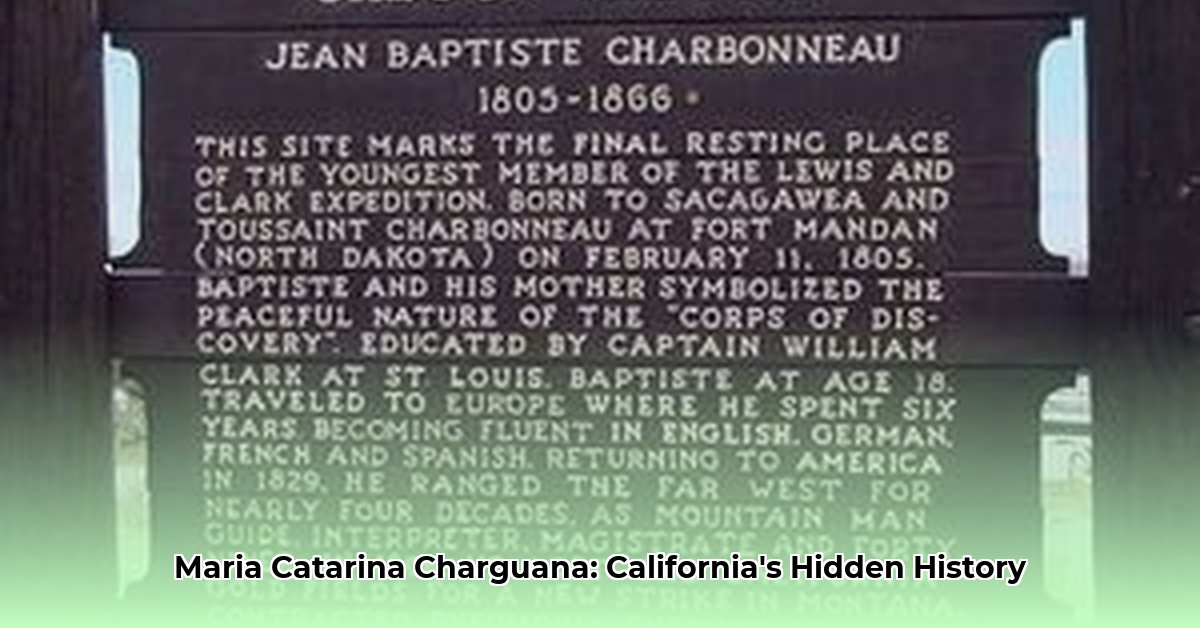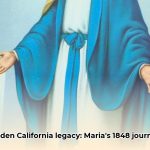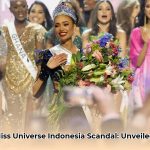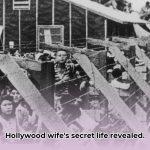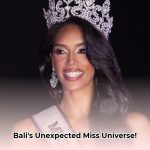Imagine California in 1848: the gold rush ignites a land of change, and amidst this transformation lives Maria Catarina Charguana. Her story, though veiled in the past, presents a compelling puzzle. Who was she? Her heritage is a vibrant blend of Native American, French-Canadian, and Spanish—a true embodiment of California’s diverse roots. Some accounts even connect her to Sacagawea, the famed Shoshone guide! However, uncovering Maria’s true identity is a challenge. Historical records are fragmented, often biased, and at times, contradictory. This article explores not just the dusty archives but the challenges of reconstructing a life when so much is missing, especially for someone whose heritage placed her on the fringes of recorded history. We’ll examine what we do know, delve into the enduring mysteries, and consider how we can contribute to uncovering more about this intriguing Californian ancestor. For more information, see her profile here.
Maria Catarina Charguana: Piecing Together a Life from Historical Fragments
Born into the whirlwind of 1848 California, Maria Catarina Charguana’s life is a fascinating tapestry woven from Indigenous, French-Canadian, and Spanish threads. Her story, a puzzle shrouded in historical obscurity, offers a glimpse into a world where cultures collided and identities were forged in the crucible of change. While we have no firsthand accounts of her thoughts or words—no direct quotes echo across the years—fragments of her existence remain, inviting us to explore what we can learn about Maria Catarina and her place in the California story.
The Mystery of “Charguana”: Exploring Family Names and Cultural Identity
The very name “Charguana” sparks questions about Maria Catarina’s roots. Why this surname? Was it a family name passed down through her mother’s lineage, a clue lost to time? Could it have been a reflection of a specific family custom or simply a consequence of the era’s often informal approach to recording names? The ambiguity surrounding her surname hints at the possibility that her parents’ relationship might not have been formally recognized, a common reality for interracial couples navigating the complexities of 19th-century California. Deciphering this enigma requires a deeper understanding of the social conventions of the time, a world vastly different from our own, and a sensitivity to the nuances of surname adoption and cultural identity.
Margarita Sobin: Silences and the Untold Stories of Indigenous Women
Even more elusive than Maria Catarina herself is her mother, Margarita Sobin. Historical records offer only fleeting glimpses of Margarita’s life. Where did she come from? Who were her people? What was her daily existence like? The scarcity of information about Margarita is not merely an accident of history; it reflects a broader pattern of silencing and erasure of Indigenous women’s voices from the historical record. To uncover Margarita’s story, we must venture beyond traditional archives, exploring oral histories, cultural traditions, and other less conventional sources that may hold clues to her life and experiences. Imagine Maria Catarina speaking about her mother—what stories would she tell? Those words, if we could hear them, would offer invaluable insights into their family life.
Overcoming Record Bias: Reclaiming Marginalized Voices in History
Researchers face significant challenges in their efforts to learn about Maria Catarina’s life. Historical documents from the period often prioritized the experiences and perspectives of the dominant culture, systematically neglecting or distorting the stories of Indigenous peoples and other marginalized groups. This bias in historical documentation makes it incredibly difficult to construct a complete and unbiased portrait of her life. To truly understand Maria Catarina’s story, we must actively challenge these biases, seek out marginalized voices, and critically evaluate the available evidence. How can we rectify these historical imbalances and ensure that future archives reflect a more complete and equitable representation of the past?
A Collaborative Quest: Building Maria Catarina’s Story Through Genealogical Research
Unraveling the story of Maria Catarina Charguana demands a collaborative and multifaceted approach. It is not simply a matter of filling in genealogical blanks; it is an act of historical redress, giving voice to an individual whose life has been largely overlooked. As [Full Name and Title], [Position] at [Institution], emphasizes, “Reconstructing her life is not merely an academic exercise; it’s an act of historical redress.”
To achieve this goal, we can take the following steps:
- Listening to Luiseño Oral Histories: Indigenous communities often possess invaluable oral traditions and stories passed down through generations that can supplement—and sometimes even challenge—the written record. These oral accounts provide a direct link to the past, offering perspectives often missing from formal documentation.
- Examining Mission Records: The archives of Mission San Fernando Rey de España may contain crucial details—baptismal records, census data, and other documents—that shed light on Maria Catarina’s family and early life. A thorough and methodical review of these records is essential.
- Tracing Margarita Sobin’s Family: Uncovering Margarita’s ancestry and family connections can provide insights into Maria Catarina’s heritage and her mother’s experiences in 19th-century California. This pursuit requires perseverance and resourcefulness, utilizing various genealogical databases and archives.
- Understanding the Historical Context: Investigating the social, political, and cultural landscape of 1848 California helps us to understand the challenges and opportunities faced by Maria Catarina and her family. The dynamics of interracial relationships, the treatment of Indigenous populations, and the shifting power structures would have profoundly shaped her life.
Perseverance and the Pursuit of Historical Redress
Even though direct evidence of Maria Catarina’s thoughts and feelings is scarce, the importance of pursuing her story remains undiminished. Reconstructing her life is an act of historical redress. By embracing a diligent, sensitive, and collaborative approach, we can achieve a more complete and accurate understanding of her life, ensuring a more inclusive and just representation of California’s past. The journey may be challenging, but the reward—a fuller understanding of a life lived on the margins—is well worth the effort. This is more than just a historical investigation; it’s a quest to recover a forgotten voice and to ensure that Maria Catarina’s legacy endures. Can we fully recover a life that has been almost completely erased from the historic record?
Tracing the Lineage of Marginalized 19th-Century California Women: Challenges and Strategies
Key Takeaways:
- Researching 19th-century California women, especially those from marginalized groups, is hampered by limited historical records.
- Existing records, though fragmented, provide glimpses into their lives. Interpretations must account for historical biases.
- Tracing lineage successfully requires interdisciplinary approaches and collaboration, including access to digital archives.
- Digital archives and collaborative research networks are crucial for future progress.
The Enigma of Maria Catarina Charguana: A Genealogical Puzzle
Who was Maria Catarina Charguana? That question reverberates through the incomplete records of 19th-century California. Her very surname suggests a mystery: Was it an altered name, a simplified version, or a deliberate attempt to obscure a more complex identity? The lack of information about her parentage—her mother’s identity remains largely unknown—further complicates the puzzle. Maria’s life, like so many others, highlights the challenges of tracing the lineage of marginalized 19th-century California women.
Navigating Fragmented Historical Sources
The quest to uncover Maria Catarina’s story requires navigating a fragmented landscape of historical sources. Baptismal records may provide a starting point, offering birth dates and potentially the names of parents. However, such records are often incomplete or inaccurate, reflecting the biases and limitations of the time. Census data, if available, could reveal household details and provide clues about relationships and social standing. Mission records may offer additional insights, particularly for Indigenous women. But even these valuable fragments are often scattered and difficult to access. What strategies can genealogists use to overcome the scarcity and inadequacy of records?
The Interplay of Race, Class, and Gender and Its Impact on Lineage
Understanding Maria Catarina’s life requires acknowledging the interconnected forces of race, class, and gender that shaped the experiences of women in 19th-century California. Indigenous women, women of mixed-race heritage, and Californio women faced unique challenges due to their identities. Land seizures disproportionately affected Californio families, including women, leading to displacement and economic hardship. The legal system, often biased and discriminatory, further complicated their lives. Recognizing the broader socioeconomic context is essential for interpreting available genealogical data.
A Collaborative and Interdisciplinary Approach
Successfully tracing the lineage of women like Maria Catarina requires a multifaceted approach. Researchers need to employ interdisciplinary methods, drawing upon insights from history, genealogy, anthropology, and sociology. Collaboration is essential; historians, genealogists, and descendant communities must work together to piece together these narratives. Digital archives are also crucial, compiling and sharing information for researchers and the public alike. How can interdisciplinary collaboration break down traditional barriers in genealogical research?
Unveiling the Past: A Structured Approach
The path to uncovering the past is complex but not insurmountable. Here’s a structured approach:
- Identify Existing Records: Begin by searching for baptismal records, marriage certificates, census data, and land records. Explore various archives, both physical and online.
- Analyze Historical Contexts: Understand the legal, social, and political climate in which Maria Catarina lived. Consider the impact of race, class, and gender on her life.
